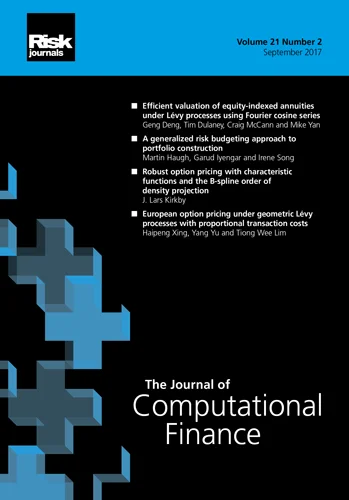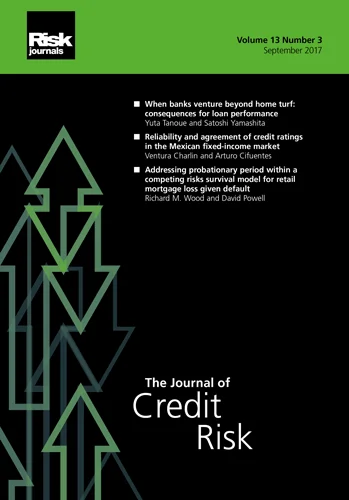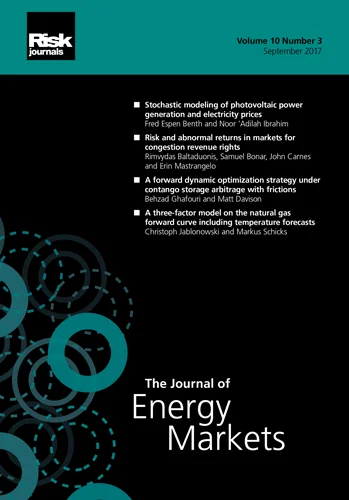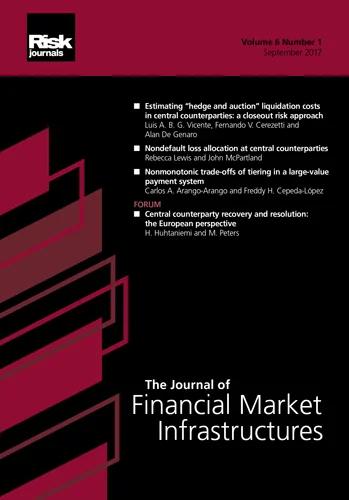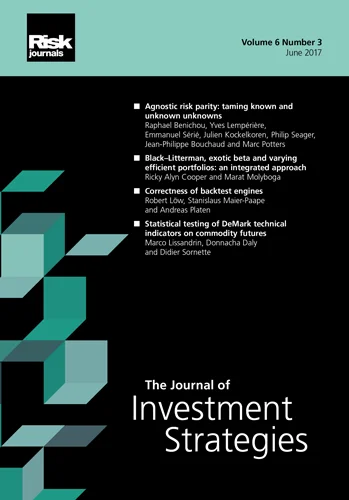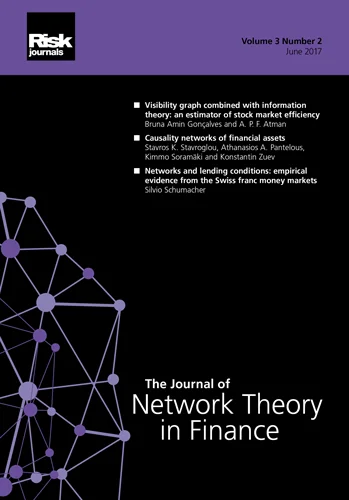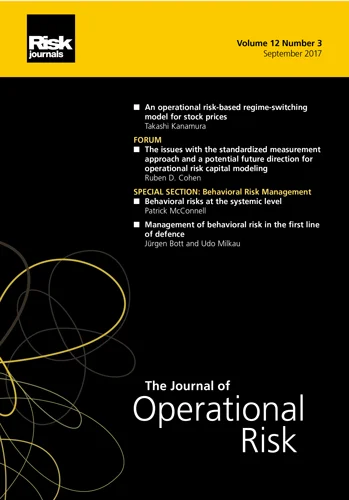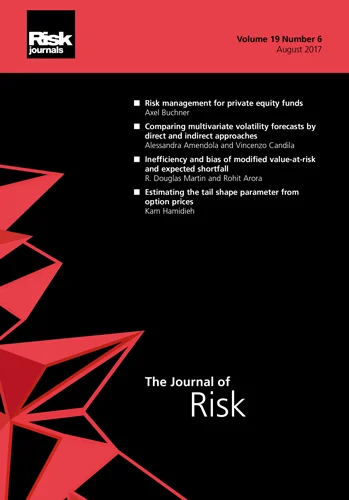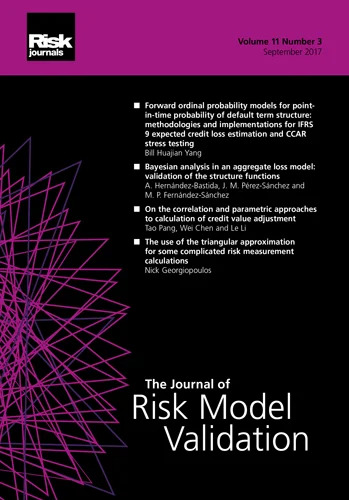Journal of Risk Model Validation
ISSN:
1753-9587 (online)
Editor-in-chief: Steve Satchell
About this journal
As monetary institutions rely greatly on economic and financial models for a wide array of applications, model validation has become progressively inventive within the field of risk. The Journal of Risk Model Validation focuses on the implementation and validation of risk models, and aims to provide a greater understanding of key issues including the empirical evaluation of existing models, pitfalls in model validation and the development of new methods. We also publish papers on back-testing. Our main field of application is in credit risk modelling but we are happy to consider any issues of risk model validation for any financial asset class.
The Journal of Risk Model Validation considers submissions in the form of research papers on topics including, but not limited to:
- Empirical model evaluation studies
- Backtesting studies
- Stress-testing studies
- New methods of model validation/backtesting/stress-testing
- Best practices in model development, deployment, production and maintenance
- Pitfalls in model validation techniques (all types of risk, forecasting, pricing and rating)
Abstracting and Indexing: Scopus; Web of Science - Social Science Index; EconLit; Econbiz; and Cabell’s Directory
Journal Metrics:
Journal Impact Factor: 0.6
5-Year Impact Factor: 0.4
CiteScore: 1.1
Latest papers
Crises, combined crises and their implications for firm profitability
The authors put forward a taxonomy for combined crises where up to four accompanying crises are apparent and how their interactions might impact firm profitability.
The role of personal credit in small business risk assessment: a machine learning approach
The authors investigate how personal credit data can be combined with business-level and tradeline variables in a machine learning framework to enhance default prediction.
Interpretable machine learning for default risk prediction in stress testing
This paper proposes a benchmark model which can be used to predict the forward-looking probability of default of a real-world credit card portfolio.
Statistically distinguishable rating scales
The author suggests a means to design a statistically distinguishable rating scale that is not excessive in relation to the existing observation statistics, allowing for more stable validation.
Green risk identification and risk measurement in fintech: a particle swarm optimization fuzzy analytic hierarchy process and sparrow search algorithm quantile regression neural network approach
The authors apply PSO-FAHP and SSA-QRNN models to identify and measure financial risks in the fintech sector.
An aggregated metrics framework for multicriteria model validation using rolling origin evaluation
The authors apply the rolling origin evaluation framework to model validation in multicriteria settings, where performance must be assessed through various scenarios or forecast targets.
Probabilistic classification with discriminative and generative models: credit-scoring application
The author investigates how probabilistic classification can be used to enhance credit-scoring accuracy, offering a robust means for assessing model performance under various reliability criteria
A comprehensive explainable approach for imbalanced financial distress prediction
The authors suggest an explainable machine learning method for imbalanced financial distress prediction which uses extreme gradient boosting.
Systemic importance identification and risk supervision of banks: evidence from China
Investigating systemic risk, the authors build an interbank network based on tail dependence and suggest typical network centrality measures can suffer from redundancy issues.
Failure mode and effects analysis–analytic hierarchy process (FMEA-AHP) model in supplier risk management
The authors put forward an FMEA-AHP method to identify and manage supplier risks in a mining firm that is also applicable to other sectors and companies.
Model risk quantification for machine learning models in credit risk
This paper analyses bank-specific model risk measurement methods with a focus on implemented model risk rating solutions for MLMs and discusses challenges faced by the validation function.
Research on the dynamic early warning effect on the manufacturing industry from the perspective of systemic financial risks: evidence from the Chinese market
The authors explore how the China systemic financial risk composite index might contribute to the development of the Chinese manufacturing industry.
A three-stage fusion model for predicting financial distress considering semantic and sentiment information
The authors apply sentiment analysis to management discussion and analysis texts to aid the prediction of financial distress with an innovative three-phase fusion model.
The fate of zombie firms: prediction, determinants and exit paths
This paper examines how machine learning and statistical methods may be used to predict whether or not zombie firms will escape their fate as zombies.
Enhancing default prediction in alternative lending: leveraging credit bureau data and machine learning
The authors apply machine learning techniques to credit bureau data and loan-specific variables to improve default prediction in the alternative lending sector.
Overcoming issues with time-scaling value-at-risk
The authors investigate the impact of different time-scaling techniques on the accuracy of value-at- risk models, emphasising the importance of carefully scaling methods and considering alternative risk modeling approaches.
Dissecting initial margin forecasts: models, limitations and backtesting
The authors demonstrate that initial margin is not value-at-risk, but its approximation, and suggest a generic backtesting and verification framework that accommodates both forecasting limitations and existing models.
Incorporating financial reports and deep learning for financial distress prediction: empirical evidence from Chinese listed companies
The authors investigate the use of text information processing methods for financial distress prediction and how this method can be combined with traditional means to improve prediction accuracy.
Lessons for academic research from model risk management in financial institutions
The authors suggest that model risk management practices used in financial institutions can be applied to academic research and enhance research outcomes.
Research on the multifractal volatility of Chinese banks based on the synthetic minority oversampling technique, edited nearest neighbors and long short-term memory
The authors propose the SMOTEENN-LSTM method to predict risk warnings for Chinese banks, demonstrating the improved performance of their model relative to commonly used methods.
